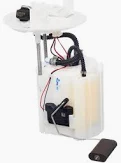Installing an electric fuel pump is no exception, because correct installation directly affects the efficiency of engine performance due to proper fuel delivery. Depending on the vehicle, a correctly working fuel pump usual runs at 30 to as much as 85 PSI. On average, the process last between 2 and 4 hours; it varies based on how experienced your automotive installer is as well as each vehicle.
In the first place, be certain that the vehicle is parked on flat ground with a depressurized fuel system. This is important as fuel lines carry pressurized contents, and not bleeding the line could lead to a dangerous spray of flammable gas. Remove the fuel pump relay or fuse and try to Start engine until you relief pressure very important. It will release any residual pressure, This contributes to 15% of fuel pump installation injuries, according to Automotive Safety Reports.
Next, access the fuel pump. On most vehicles, the electric fuel pump is located in the tank. In the case of these units, the process is relatively time-consuming – it involves loosening bolts and lowering a tank using a jack. Moving the tank is certainly doable with help and regular equipment, but they usually weigh some 40 to 80 pounds if empty. This step can be skipped for vehicles that have an external pump and is mounted along the fuel line, usually near the rear axle.
After the tank is removed or external pump unburied, remove fuel lines and electrical connections from out of existing pump. Those lines can be brittle, and Edmunds also offers the suggestion of replacing worn fuel lines while they're off anyway (the old ones might just pop open when you try reconnect them to the new pump). Responsibly removing the electric kit is another win to distributing 10% of issues with new installation, it will help preventing work in pump does not work properly after the installation.

Once the old pump is out (in some cases this may require delicate or forceful removal) simply hang/attach your new electric fuel pump on it and connect in all place. Make sure to wire the pump correctly for your model so that current doesn't flow in reverse and damage the pump. According to a recent article in Forbes, improper wiring connections account for nearly 1/4 of all premature fuel pump failures due to non-OEM installations.
Once the pump has been removed, you can re-install your fuel tank after torquing all bolts to manufacturer spec (usually around 18-30 lb-ft of torque for most cars) Replace the empty fuel tank and refill with petrol then restore power by reconnecting the fuse (relay). To start the engine, first activate the pump by turning the ignition to "on" but not starting it a few times. This offers a means by which the pump is able to pressurize fuel system components, decreasing potential for air pockets or lack of pressure during that initial start.
Next, turn the car on and check for leaks or weird noises from particularly around that pump and those fuel lines. Finally, once everything is in working order, take it for a test drive to be sure. As long as an electric fuel pump is installed properly and the vehicle is maintained with high-quality gasoline, this type of part should last for up to about 100,000 or even more than that in some cases.
High performance fuel pumpsIf you are looking for robust and efficient fuel pumps, models such as the Electric Fuel Pump stand out with their durability and precision which guarantee a correct flow of gasoline for your engine.